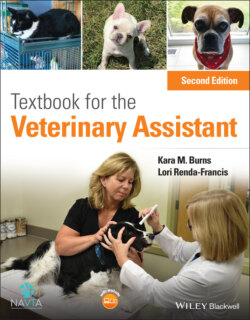Читать книгу Textbook for the Veterinary Assistant - Lori Renda-Francis - Страница 48
Feline
ОглавлениеDomestic cats are often thought of as animals which do not socialize. However, this is not totally correct. Domestication of the cat has led to a highly adaptable animal that can modify its social organization according to available resources. Feral or free‐ranging cats may live in large groups, especially when a food source may be near – a dump, a fishing village, or a farm. These groups are typically made up of related females which form a dominance pecking order. A dominant male cat's territory includes the territory of these females. The male is allowed when a female is in estrus. Other cats deemed to be “strangers” are chased away from the territory.
Domestic cats that live together may demonstrate cheek rubbing and tail rubbing. Even so, household cat aggression continues to be a problem for multicat households. Cat owners are unfamiliar with the visual signals used by cats, and their signals may be very subtle. Differentiating play from true aggression can be challenging for most pet owners.
Cats are not asocial animals; however, their tolerance of other cats is limited and is based on familiarity and individual temperament.
Introducing a new cat should be done in a gradual and systematic way rather than by simply releasing a new cat into the home. The veterinary team must educate clients about the challenges associated with adding cats to a household – behavioral and medical – before the owner gets a new cat. The tendency for a cat to be aggressive toward other cats appears to be an innate trait. Thus, cat owners must be educated that some cats simply do not like to live with other cats. Even if the addition of another cat has been done properly, there is no guarantee that the cats will eventually get along with one another. Tolerance of each other may be more likely in a larger home, where cats have plenty of litterboxes, food dishes, water bowls, etc., and are not forced to interact with each other because of close confinement. Those clients who want more than one cat find it easier to acquire two kittens and raise them together. Research demonstrates that aggression is less likely in pairs of cats, the longer they have lived together. Veterinary teams must educate clients that adding new cats to the home regularly and/or maintaining more than two or three cats at a time are more likely to lead to aggression and house soiling problems.
